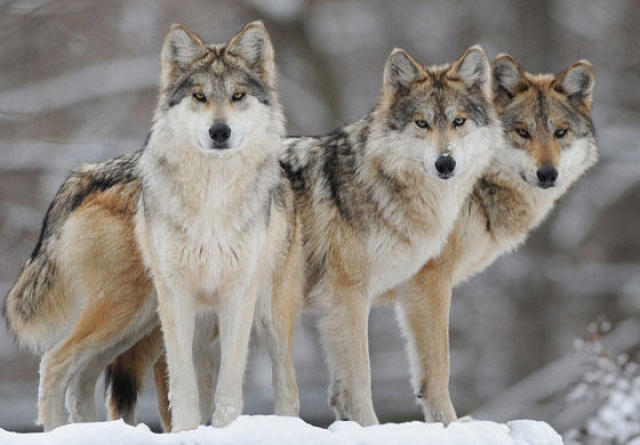Wolves live in groups called packs. A pack is a family of seven to eight wolves with a mom, dad, and offspring. The wolves' communication skills are very important to the pack's survival.Wolves work together to hunt, raise their young, and protect their territory.
Wolves communicate with more than howls. They whimper and whine, growl and bark, yelp and snarl. They also use scents produced by their bodies to communicate. A wolf’s sense of smell is 100 times stronger than a human’s. One source of scent is urine, which they use to mark territory and to tell other wolves in their own pack where they are. Another way wolves communicate is through body language.
When a pack of wolves does howl, it can be heard from ten miles away. The howl is used as a way to call to another pack or warn of danger. Each pack has a unique howl, and while they don’t howl at the moon, wolves howl more when the moon is full and bright. When a wolf wants to play, it prances about happily and bows—lowering the front of its body while its rump stays up in the air with its tail wagging. When its angry, a wolf may furrow its forehead, show its fangs, or growl.

